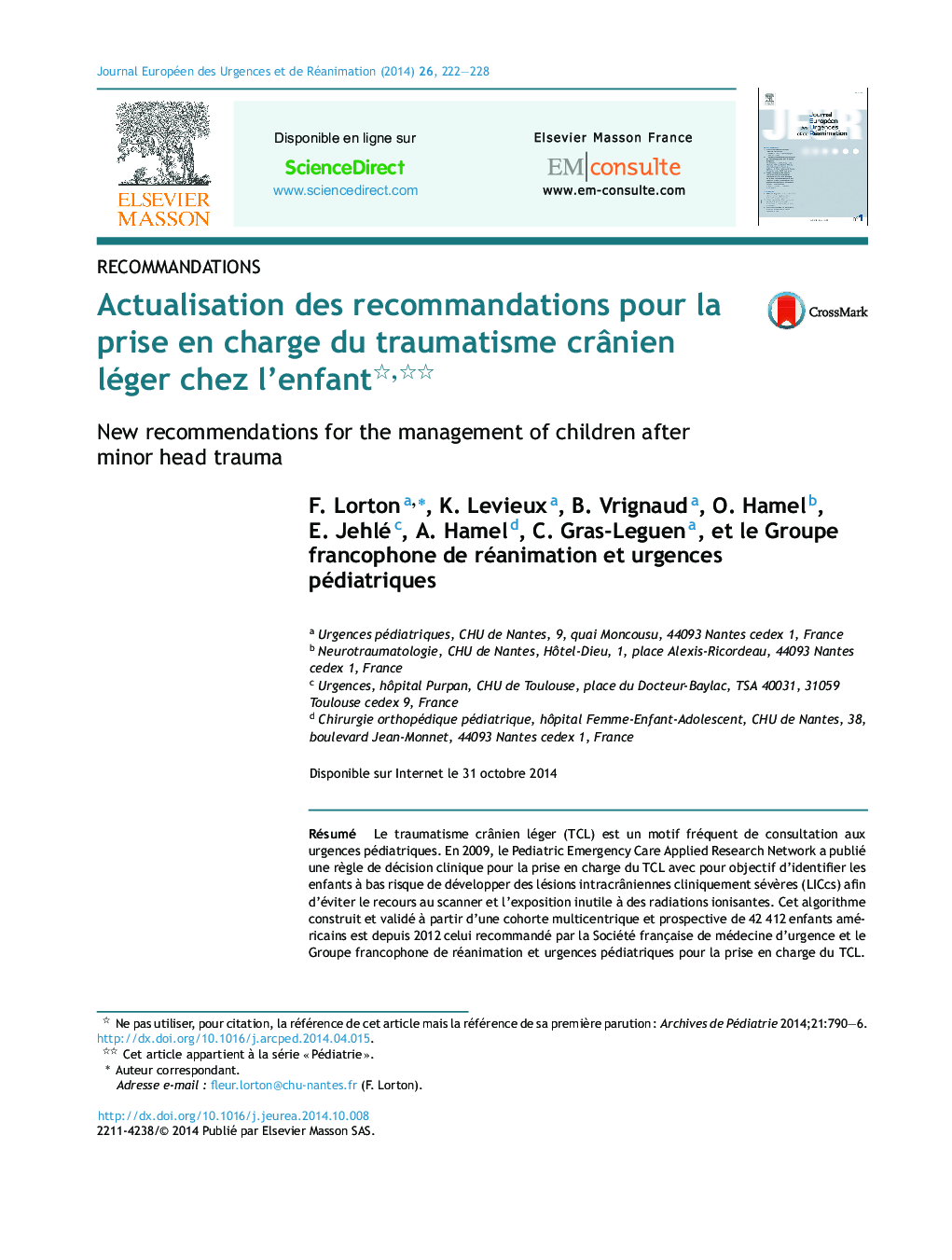| Article ID | Journal | Published Year | Pages | File Type |
|---|---|---|---|---|
| 3251547 | Journal Européen des Urgences et de Réanimation | 2014 | 7 Pages |
Abstract
Minor head trauma is a common cause for pediatric emergency department visits. In 2009, the Pediatric Emergency Care Applied Research Network (PECARN) published a clinical prediction rule for identifying children at very low risk of clinically important traumatic brain injuries (ciTBI) and for reducing CT use because of malignancy induced by ionizing radiation. The prediction rule for ciTBI was derived and validated on 42,412Â children in a prospective cohort study. The Société Française de Médecine d'Urgence (French Emergency Medicine Society) and the Groupe Francophone de Réanimation et Urgences Pédiatriques (French-Language Pediatric Emergency Care Group) recommend this algorithm for the management of children after minor head trauma. Based on clinical variables (history, symptoms, and physical examination findings), the algorithm assists in medical decision-making: CT scan, hospitalization for observation or discharge, according to three levels of ciTBI risk (high, intermediate, or low risk). The prediction rule sensitivity for children younger than 2Â years is 100% [86.3-100] and for those aged 2Â years and older it is 96.8% [89-99.6]. Our aim is to present these new recommendations for the management of children after minor head trauma.
Related Topics
Health Sciences
Medicine and Dentistry
Emergency Medicine
Authors
F. Lorton, K. Levieux, B. Vrignaud, O. Hamel, E. Jehlé, A. Hamel, C. Gras-Leguen, Groupe francophone de réanimation et urgences pédiatriques Groupe francophone de réanimation et urgences pédiatriques,
